Waking up in the hostel
Casa Grillo 3 Puntas in Zorritos is the most relaxing. You leave your cabin, you walk for a minute and you can stroll along the beach and contemplate the Pacific before going to breakfast, what more could you ask for? You can also explore the Mangroves of Tumbes and Puerto Pizarro, to the north.
The mud pools in Hervideros
Having breakfast, I meet two Peruvians and a Catalan and we form a group to go to some mud pools that are nearby, called
Aguas Termales de Hervideros. To get there, we walk from the hostel all the time towards the southeast through a forest that is very peculiar. It is totally dry, almost without leaves, as if it was burned.
Tonalities of all colors, yellow, green, ocher and black make it a delight to walk through streams surrounded by hills and trees with greenish bark.
It’s the dry forest: bosque seco, one of the Peruvian ecosystems with a forest adapted to survive in an arid place with very punctual rains.

Dry forest Perú
Los Hervideros are spectacular: mud pools of different temperatures and shades, another gift from Mother Earth here in the Ring of Fire.
We take the chance to take a relaxing bath and smear our bodies with mud and take some fun photos. Before leaving, and for 3 soles, a man throws buckets of water over us, and we are more or less clean again.
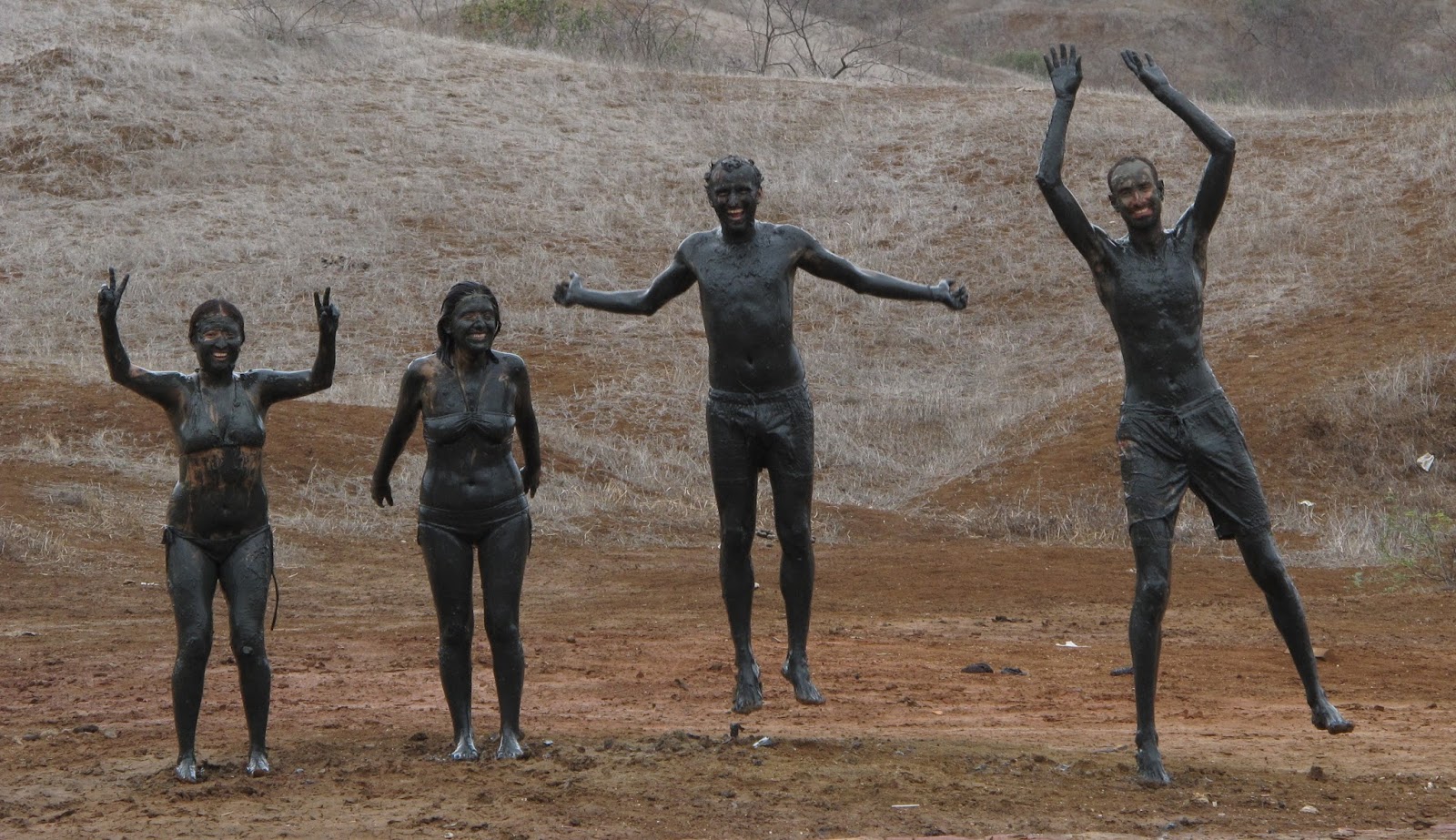
Well covered in mud in Hervideros

Mud pool in Hervideros
To finish off a great day, we go to the beach, eat ceviche, and dance listening to the hit of the summer, a burst of cumbia called
“Una cerveza”.
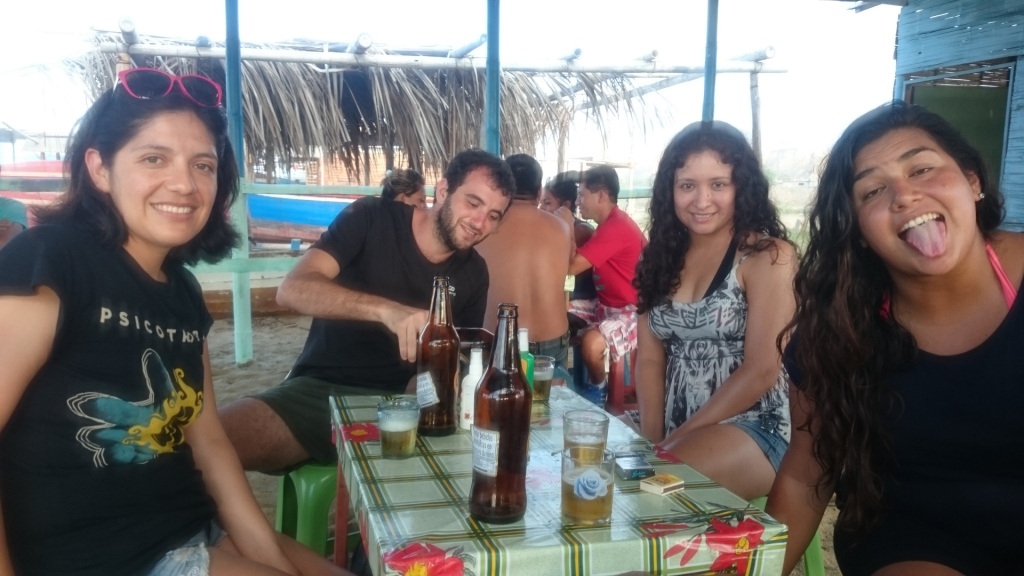
Beach bar in Zorritos
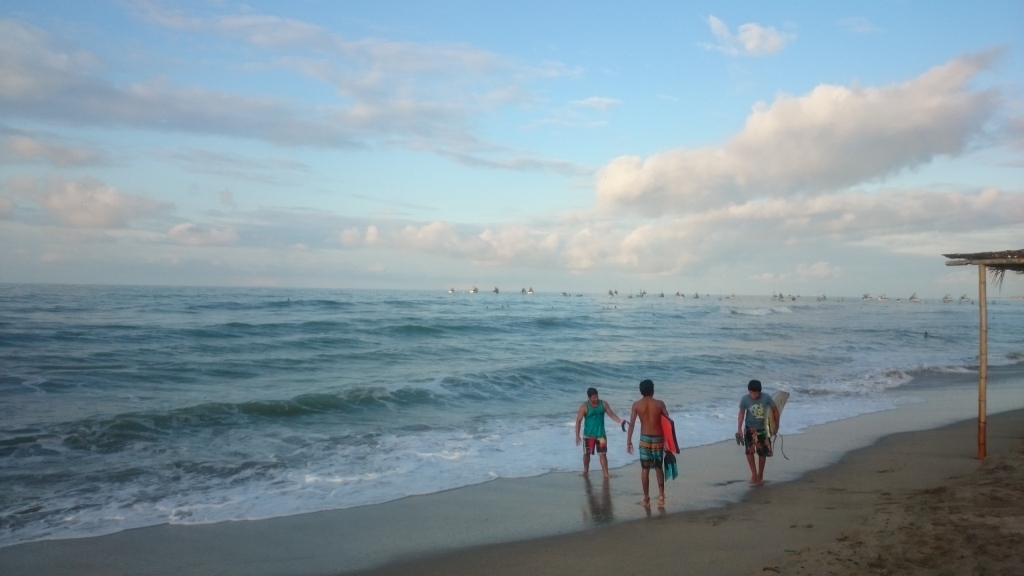
Surfers in Zorritos
The mangroves of Tumbes
The next day we decided to explore the Tumbes area, in the north. First, we go to Port 25. We decided to go by public transport and as there are 6 of us today it is quite chaotic and it takes us a long time to get there, negotiating with a lot of tuk tuks and combis.
If you go, call the Mangroves center in Tumbes to see what time the boat that goes to the border with Ecuador leaves, since it leaves at different times depending on the tide. We arrived late and just took a boat ride through the mangroves, which was pretty good.
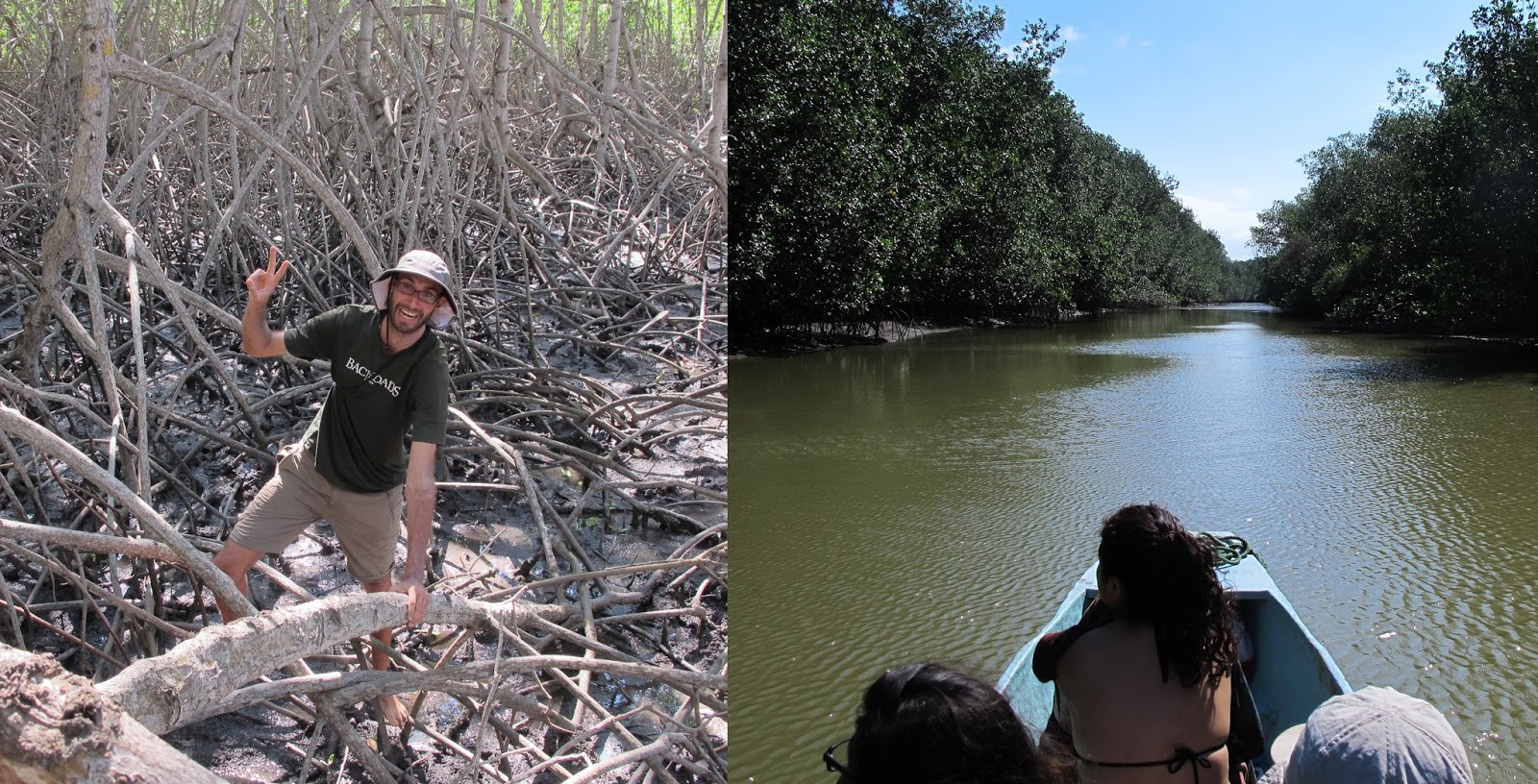
Exploring the Mangroves of Tumbes
A little further south there is
Puerto Pizarro, a fishing village, touristy but very beautiful. I went early and a lot of brightly colored boats were unloading fish and preparing it to sell.

Atmosphere and colors in Puerto Pizarro
From there it is very easy to talk to people who take you on a small tour of the area by boat, to “the island of birds” and to the “island of love”. You can see the mangroves and animals in the area: crabs, various birds such as the frigate, and various types of mollusks.
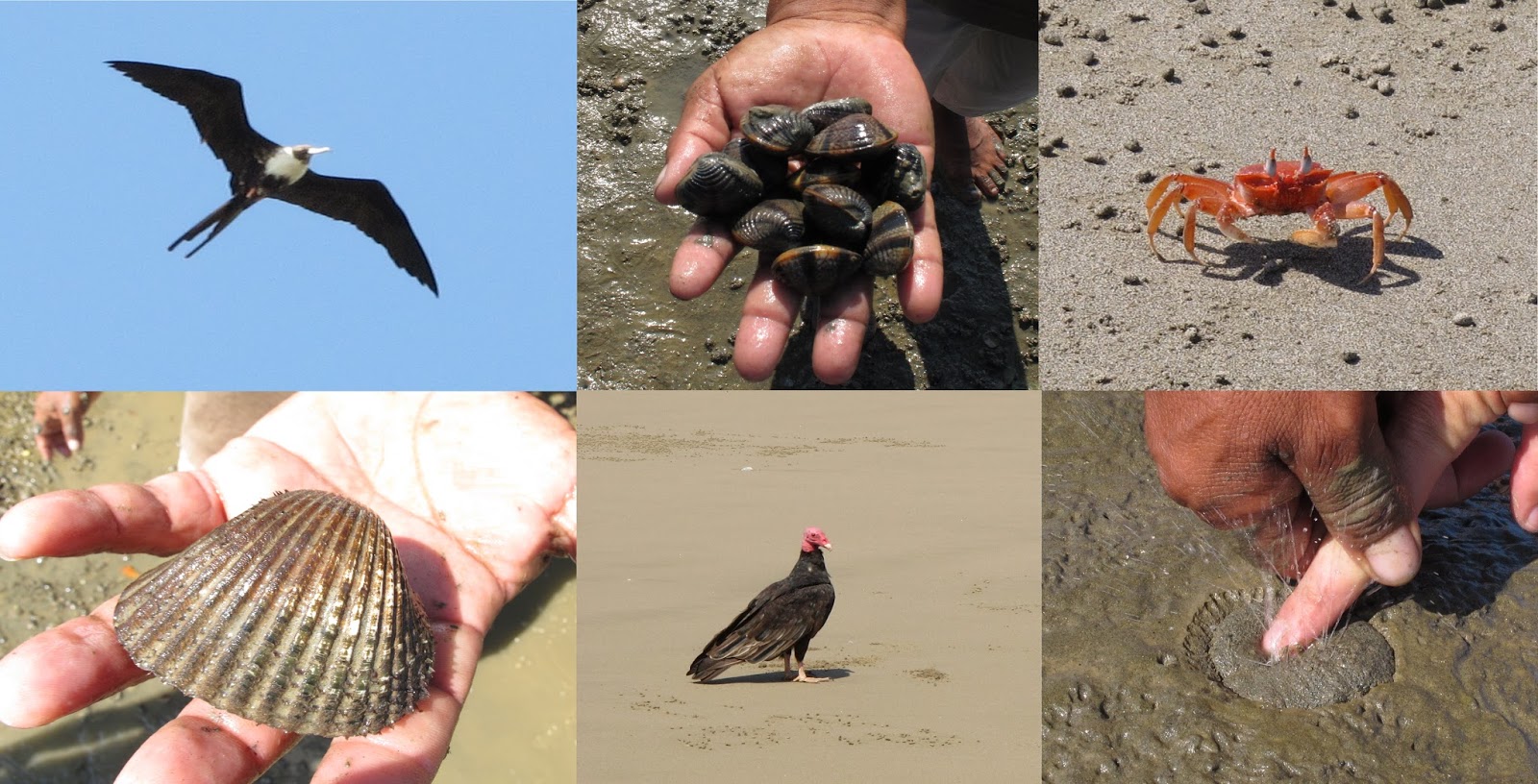
Birds, shells and crabs in Isla del Amor
These mollusks are highly valued and this area of northern Peru is famous for its seafood and beaches. There are different
kinds of shells that are extracted from this area, including the “pata de burro” (donkey leg), la “negra” (black shells) and la “rayada” (stripped).
The shellfish job is pretty tough. While tourists bathe on the beach, they are covered in clothing and gloves to protect themselves from cuts and take advantage of the low tide hours to explore the mangroves and beaches in search of these precious mollusks, especially the “black shell”.

Shellfish worker in Isla del Amor
A “black shell” ceviche may not look very good, but if you try it it will make you feel closer to heaven.
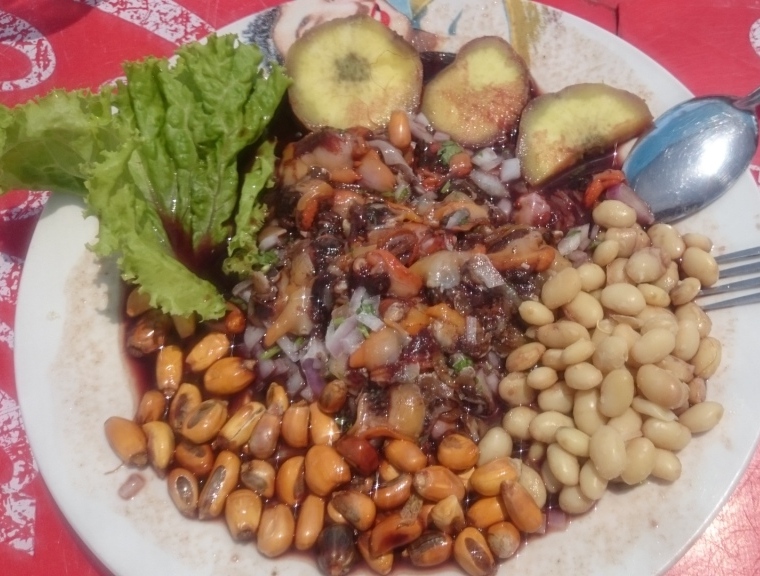
Black shell ceviche
Greetings!
Yep Yep Yep

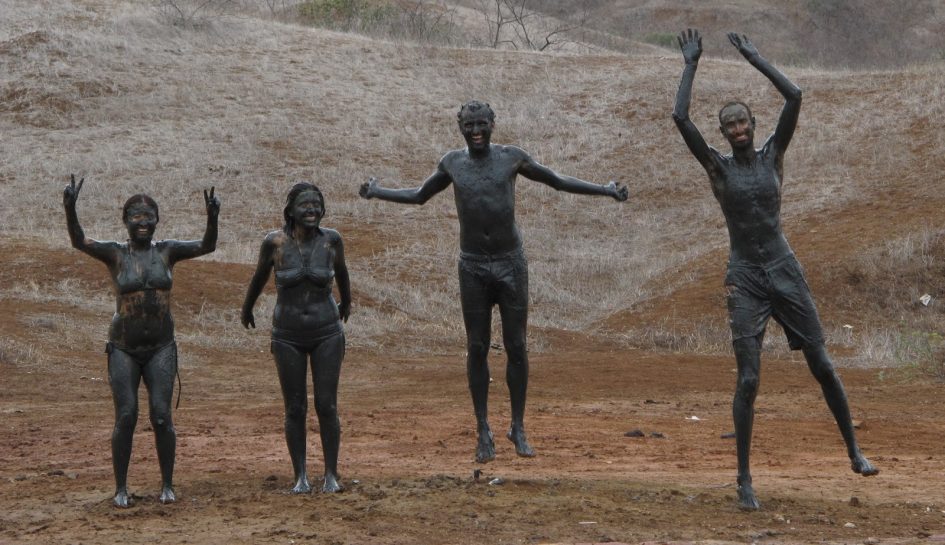











Leave a Reply